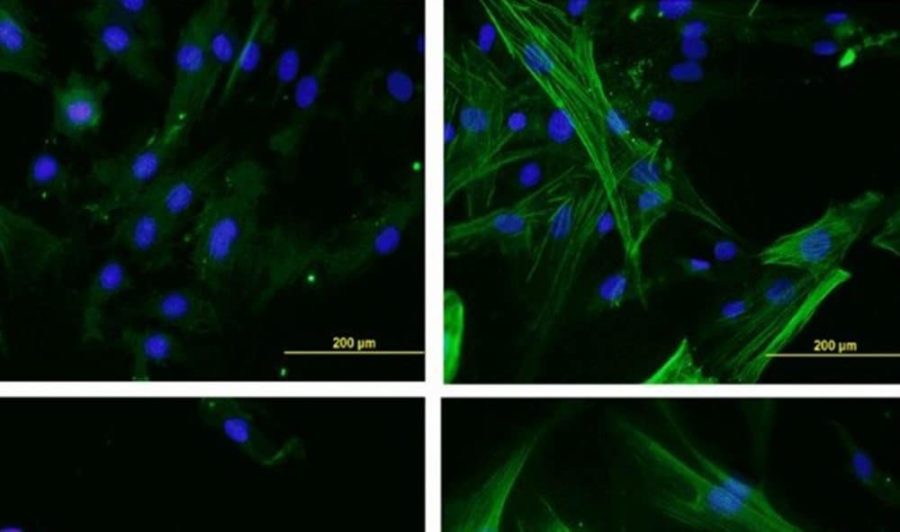Scleroderma is a rare and often fatal disease, causing the thickening of tissue, that currently lacks a cure and any effective treatments. A group of researchers, including a Michigan State University professor, is looking to change that.
“Our findings provide a new approach to developing better treatment options where few have existed,” said Richard Neubig, chairperson of the Department of Pharmacology and Toxicology in MSU’s College of Osteopathic Medicine.
Neubig, along with several of his colleagues from the University of Michigan, have identified the core signaling pathway that activates the disease and the chemical compounds that can turn it off.
“There are two kinds of scleroderma – localized and systemic – with the latter often proving to be life threatening,” said Neubig, who helped lead the study. “This research shows that by inhibiting this main signaling pathway, we can block fibrosis – the thickening of tissue that occurs with the disease.”
For localized scleroderma patients, this process often happens in the skin resulting in loss of flexibility. Systemic sclerosis has the same effect with variable degree of skin fibrosis, but also can spread throughout the body hardening key organs such as the lungs, heart, gut and kidneys.
Scleroderma is an autoimmune disorder. It’s estimated 300,000 Americans suffer from the disease with about one-third of those having the systemic form. Localized scleroderma patients usually live normal lifespans. Yet about half of systemic patients, especially with widespread skin involvement and internal organ fibrosis, will see their lives cut short.
“The majority of drug treatments that exist today for fibrosis basically look at reducing just the inflammation,” said Dinesh Khanna, associate professor in the Department of Internal Medicine and director of the Scleroderma Program at the University of Michigan. “There are other drugs that block one or two of the signaling pathways that cause the disease, but scleroderma has many of these pathways.”
Neubig agrees and adds that this new research could significantly change the quality of life for scleroderma patients and greatly increase the lifespan of systemic patients.
“Our research shows promise for the development of a new drug that can reverse the fibrosis process by flipping the main switch on all of the signaling pathways,” Neubig said. “By validating this core switch as a viable drug target, we can now continue our work to improve the chemical compounds so they will work with doses that are appropriate for people. It’s definitely promising.”
The research was funded through a private donation from Jon and Lisa Rye, a Michigan family who has experienced the effects of scleroderma firsthand. Additional financial support was received through the family’s crowdfunding site, the Scleroderma Cure Fund.
The study was co-authored by U-M graduate student Andrew Haak, Department of Pharmacology, along with U-M Medical Center rheumatology researchers Pei-Suen Tsou, Mohammad Amin, Jeffrey Ruth, Phillip Campbell and David Fox, and U-M College of Pharmacy professor Scott Larsen.
The research is published in the Journal of Pharmacology and Experimental Therapeutics.
If our reporting has informed or inspired you, please consider making a donation. Every contribution, no matter the size, empowers us to continue delivering accurate, engaging, and trustworthy science and medical news. Independent journalism requires time, effort, and resources—your support ensures we can keep uncovering the stories that matter most to you.
Join us in making knowledge accessible and impactful. Thank you for standing with us!

